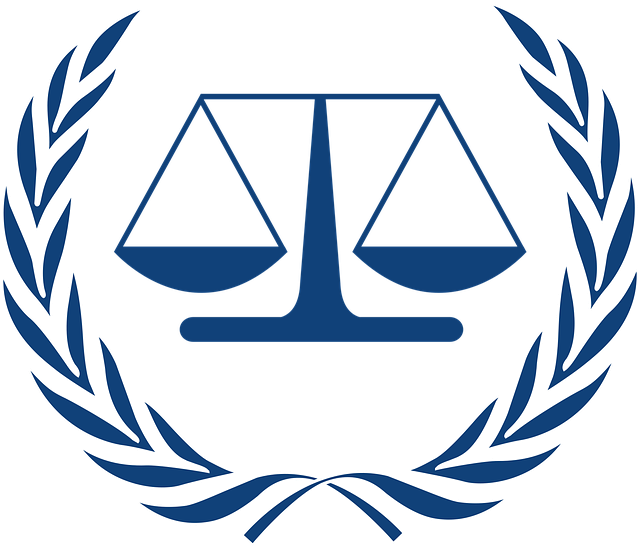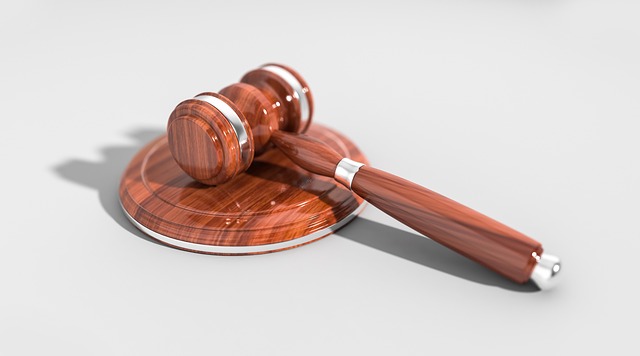Category: wrongful death statute of limitations
Wrongful Death Statute of Limitations: A Comprehensive Analysis
Introduction
The concept of a “Wrongful Death Statute of Limitations” (WLML) is a critical legal framework that dictates the time period within which a victim’s family or legal representatives can file a lawsuit following an individual’s wrongful death. This statute plays a pivotal role in balancing the rights of victims and their loved ones with the need for timely justice and closure. The WLML sets a deadline, usually expressed in years, after which legal actions are barred, ensuring that potential claims are pursued promptly and consistently. Understanding this statute is essential for individuals, advocates, and policymakers alike, as it significantly impacts how wrongful death cases are handled and resolved. This article aims to provide an exhaustive exploration of the WLML, covering its definition, historical background, global implications, economic effects, technological influences, policy frameworks, challenges, real-world applications, and future prospects. By delving into these aspects, we seek to equip readers with a comprehensive understanding of this vital legal concept.
Understanding Wrongful Death Statute of Limitations
Definition
At its core, the Wrongful Death Statute of Limitations is a legal rule that establishes a time limit for filing civil lawsuits related to wrongful deaths. It specifies the maximum duration within which a plaintiff must initiate legal proceedings after discovering or becoming aware of the harmful act causing the death. The primary purpose is to prevent delays in seeking justice and ensuring that those responsible are held accountable within a reasonable timeframe.
Key Components
- Time Limit: This is the critical element, expressing the maximum number of years (e.g., 2 years, 3 years) a plaintiff has from the date of discovery or awareness of the wrongful act to file a lawsuit.
- Discovery Rule: Most WLMLs operate on a “discovery rule,” where the statute of limitations begins to run when a reasonable person would have discovered or should have reasonably discovered both the harm and its causal connection to the defendant’s actions.
- Personal Injury Actions: WLMLs typically apply to personal injury claims resulting in death, encompassing a wide range of wrongful acts, including negligence, medical malpractice, product liability, and more.
Historical Context
The concept of limiting time for filing lawsuits has deep historical roots, dating back centuries. The early common law systems in England and America established the foundation for modern WLMLs. In English law, the doctrine of laches, which disallows claims made unreasonably late, was a precursor to the statute of limitations. Over time, these laws evolved to address specific types of cases, including wrongful deaths, with varying time frames based on societal needs and legal precedents.
Significance and Broader Landscape
The WLML is a cornerstone of civil litigation, ensuring that courts hear timely claims while protecting defendants from indefinite liability. It strikes a delicate balance by providing closure and compensation to grieving families while allowing wrongdoers to avoid potential undue penalties over extended periods. In the broader legal landscape, it is often coupled with other laws, such as those governing notice requirements and claim procedures, to create a comprehensive framework for wrongful death cases.
Global Impact and Trends
International Influence
The Wrongful Death Statute of Limitations has gained global recognition and adoption, albeit with variations across jurisdictions. Its international influence stems from the universal need for timely justice and the varying cultural and legal traditions worldwide. Many common law countries, including the United States, Canada, the United Kingdom, Australia, and New Zealand, have implemented WLMLs, often drawing from historical precedents and mutual legal assistance treaties.
Regional Variations and Trends
- North America: In the US, state laws govern WLMLs, resulting in a patchwork of deadlines ranging from one to four years. A consistent trend is the increasing awareness of the need for consistency, leading some states to harmonize their statutes. Canada, similarly, has provincial and territorial WLMLs, with most jurisdictions adopting periods between two and three years.
- Europe: European countries generally follow a three-year period, with some exceptions. For instance, Germany has a one-year limit, while France employs a two-year period for most cases. The European Union’s Directive on Successions provides a framework for cross-border WLMLs, ensuring consistency in wrongful death claims within the EU.
- Asia: Asia presents a diverse picture, with countries like Japan and South Korea adopting shorter periods (one to three years), while India has a longer limit of two years from the date of death or discovery of injury. China’s WLML is subject to change, with recent reforms introducing a three-year limit.
- Rest of the World: Many common law nations in Africa and Latin America have adopted WLMLs ranging from one to three years, often influenced by their colonial legal heritage. Australia and New Zealand maintain consistent periods of two and three years, respectively.
Impact of Regional Variations
Variations in WLMLs across regions can create complexities for multinational corporations, individuals with international ties, and victims’ families seeking justice globally. In cross-border cases, understanding the applicable statute of limitations in each jurisdiction is crucial to ensuring legal compliance and successful claims. Harmonization efforts, such as those within the EU, aim to streamline these processes and provide greater certainty.
Economic Considerations
Market Dynamics and Investment Patterns
The WLML has significant economic implications, particularly for businesses and industries facing potential wrongful death liabilities. Companies may factor these statutes into their risk assessments and insurance strategies, influencing investment decisions and operational procedures. For instance, industries with higher risks of workplace accidents or product liability may adopt more stringent safety measures to mitigate potential financial exposure.
Impact on Economic Systems
- Insurance Sector: WLMLs shape the insurance industry by influencing premiums and coverage for businesses facing wrongful death claims. Insurers consider these statutes when assessing risk, leading to varying rates and policies.
- Legal Costs: Plaintiffs’ legal fees can be substantial in wrongful death cases, especially with lengthy periods of discovery and potential appeals. WLMLs encourage efficient case management to mitigate these costs.
- Economic Incentives: In some regions, shorter WLMLs may incentivize prompt legal action, fostering a more efficient justice system. Longer periods could potentially delay resolutions, impacting economic activity and investment.
Economic Growth and Legal Certainty
A well-defined and consistent WLML contributes to economic growth by providing legal certainty. Businesses and investors can make informed decisions knowing the time limits for potential liabilities. This predictability is especially vital in high-risk industries where wrongful death incidents are more common, fostering a culture of safety and accountability.
Technological Advancements
Impact on Wrongful Death Litigation
Technology has revolutionized many aspects of legal practice, including wrongful death cases:
- Digital Discovery: Electronic discovery tools enable efficient review of vast data, documents, and digital evidence, streamlining the process of gathering relevant information for trials.
- Legal Research Platforms: Advanced online legal research databases provide quick access to case law and statutes, aiding lawyers in building strong arguments within stricter time frames.
- Case Management Software: These tools help manage complex cases, track deadlines, organize documents, and facilitate communication among team members, ensuring timely case progression.
Emerging Technologies and Future Potential
- Artificial Intelligence (AI): AI can analyze large volumes of data to predict outcomes, identify patterns in similar cases, and assist in strategy formulation. It may also automate certain tasks, increasing efficiency.
- Blockchain: This technology’s potential lies in ensuring the integrity of digital evidence and records, enhancing transparency and trust in the legal process.
- Virtual Reality (VR): VR can recreate scenes of accidents or incidents, providing immersive experiences for juries to better understand complex cases.
Challenges and Ethical Considerations
While technological advancements offer significant benefits, they also present challenges:
- Data Privacy: Handling sensitive personal data requires robust security measures to protect privacy and comply with relevant data protection laws.
- Digital Divide: Access to technology and digital resources may vary, potentially disadvantaging those from less privileged backgrounds in pursuing legal claims.
- Ethical Use of AI: Ensuring the ethical deployment of AI in law is crucial, especially regarding bias in algorithms and the role of human judges in oversight.
Policy and Regulation
Governing Statutes and Frameworks
The WLML is typically governed by a combination of:
- Primary Legislation: This includes statutes specifically defining the time limits for wrongful death claims.
- Secondary Laws: These may cover related areas, such as notice requirements, procedures for filing claims, and exceptions to the statute of limitations.
- Case Law: Judicial interpretations of these laws further shape their application and understanding.
Key Policy Implications
- Consistency and Predictability: Policies promoting consistent WLMLs across jurisdictions enhance predictability, ensuring fair treatment for all claimants.
- Balancing Interests: The policy should balance the interests of victims’ families in seeking justice with the rights of defendants to be protected from indefinite liability.
- Access to Justice: Ensuring that all individuals have access to legal resources and understanding their rights under the WLML is a critical policy objective.
Legislative Developments
- Harmonization Efforts: Many countries are harmonizing their WLMLs to create consistency, especially in regions with multiple jurisdictions (e.g., EU member states).
- Reforms and Amendments: Statutes may be amended to address emerging issues, such as the impact of technology on discovery or changing societal norms regarding justice timelines.
Challenges and Criticisms
Common Issues
- Length of Time Limits: Critics argue that strict time limits can hinder victims’ ability to seek justice, especially in complex cases requiring extensive investigation.
- Discovery Rule: The interpretation and application of the discovery rule vary, leading to disputes over when a plaintiff is deemed to have discovered or should have discovered their harm.
- Complex Cases: Unusual or exceptional circumstances, such as hidden injuries or fraudulent concealment, can extend the time for filing, complicating case management.
Proposed Solutions
- Flexibility within Limits: Some jurisdictions allow extensions under specific conditions, ensuring justice even if within the extended period.
- Discovery Rule Clarification: Legal guidance and more uniform interpretations of the discovery rule can provide clarity and reduce disputes.
- Alternative Dispute Resolution (ADR): Encouraging ADR for simpler cases can expedite resolutions while allowing complex cases to proceed through courts at a manageable pace.
Case Studies: Successful Applications and Lessons Learned
Case Study 1: The United States – Uniform WLML Efforts
The US has seen significant state-level efforts to harmonize WLMLs, with some states adopting uniform statutes of three years from the discovery or death date. California’s recent reform, AB2018, established a two-year limit from the date of death or discovery of injury, aligning with many other states. This move aimed to provide consistency and reduce confusion for both plaintiffs and defendants. The case highlights the importance of state collaboration in creating a unified legal framework.
Case Study 2: Canada – Indigenous Peoples’ Claims
In Canada, the WLML has been a subject of scrutiny, particularly regarding Indigenous peoples’ claims. Historical injustices and systemic issues have led to prolonged time frames for filing claims related to land rights, cultural heritage, and other matters. The government’s response includes dedicated processes and extended statutes of limitations to address these unique challenges, recognizing the need for reconciliation and justice.
Case Study 3: Australia – Medical Malpractice Reform
Australia’s medical malpractice system underwent significant reforms in some states, including changes to the WLML. New South Wales implemented a two-year limit from the date of injury or discovery of negligence. The reform aimed to balance patient access to justice with the need for doctors and healthcare providers to defend against old claims, ensuring timely resolution of legitimate cases.
Lessons Learned:
- Flexibility and Adaptation: Successful WLMLs demonstrate the importance of flexibility within set time limits, accommodating exceptional circumstances and evolving legal landscapes.
- Addressing Disparities: Recognizing and addressing disparities in access to justice, as seen in Indigenous claims, is crucial for equitable legal systems.
- Balancing Interests: Effective policies must continually balance the interests of victims with those of potential defendants, fostering a fair and just legal environment.
Future Prospects: Emerging Trends and Strategic Considerations
Potential Growth Areas
- International Cross-Border Cases: With global mobility and international business increasing, cross-border wrongful death cases will likely rise, demanding streamlined WLMLs and mutual legal assistance.
- Technological Integration: Further integration of technology in legal practice will continue to shape WLMLs, with AI and data analytics potentially influencing time frames and case management.
- Indigenous Justice: Many countries are recognizing the need for specialized WLMLs or processes to address historic wrongs against Indigenous communities, leading to unique legal developments.
Emerging Trends
- Statute Shortenings: Some jurisdictions may continue to shorten WLMLs, driven by economic and efficiency considerations, requiring careful consideration of their impact on access to justice.
- Alternative Dispute Resolution Growth: ADR is expected to expand globally, offering faster and more cost-effective resolutions for certain cases while complementing traditional litigation.
- Data Privacy Concerns: As technology advances, data privacy issues will remain a focus, influencing how sensitive information, including personal health records, is handled in wrongful death claims.
Strategic Considerations
- Legal Education and Awareness: Educating the public about WLMLs can empower individuals to take timely action and ensure they understand their legal rights.
- Collaborative Policy Making: Multidisciplinary approaches involving legal experts, policymakers, and community representatives can lead to more effective and equitable WLML frameworks.
- Adaptive Legislation: Legislatures should remain agile, adapting statutes to address emerging trends, technological changes, and societal shifts in justice expectations.
Conclusion: Navigating the Future of Wrongful Death Statute of Limitations
The Wrongful Death Statute of Limitations is a dynamic legal concept that reflects society’s evolving understanding of justice and fairness. As global connectivity and technology continue to shape our world, WLMLs must adapt to address emerging challenges and opportunities. By examining historical context, global trends, economic implications, technological advancements, policy frameworks, and real-world applications, we gain valuable insights into this critical area of law.
The future prospects for WLMLs present a mix of promising growth areas and complex issues. As we navigate these changes, it is essential to uphold the core principles of access to justice, timely resolutions, and fair treatment for all claimants. Through continuous evaluation, adaptation, and collaboration, legal systems can ensure that the WLML remains a vital tool in delivering justice for wrongful death cases while fostering a more efficient and responsive legal environment.
FAQ Section: Addressing Common Concerns
Q: What happens if I file a wrongful death claim after the statute of limitations has expired?
A: If you miss the deadline, your claim may be dismissed. However, in some jurisdictions, extensions or exceptions may apply under specific circumstances, so consulting a lawyer is advisable.
Q: How does the discovery rule affect my case?
A: The discovery rule provides that the statute of limitations begins when a plaintiff discovers or should have discovered their harm. This can be crucial, and legal advice is essential to determine when this period starts.
Q: Can technology help me with my wrongful death claim?
A: Absolutely! Legal technology can streamline processes, enhance discovery, and improve case management. However, ensure that any digital tools used comply with data privacy laws and ethical standards.
Q: Are there special considerations for Indigenous peoples’ claims?
A: Yes, many countries are recognizing the need for specialized processes or extended statutes of limitations to address historic wrongs against Indigenous communities. These unique cases often require tailored legal approaches.
Q: How can I ensure my family’s rights are protected if I die in an accident?
A: Creating advance directives and designating beneficiaries can help ensure your family’s wishes are respected. Consult an attorney to set up these documents, which may include power of attorney and a will.
Discovery Rule: Unlocking Legal Filing Periods & Wrongful Death Claims

The Discovery Rule is a crucial legal principle governing filing deadlines in personal injury cases,…….
Unraveling Wrongful Death Law: Evidence’s Impact on Statute of Limitations

The wrongful death statute of limitations is a critical legal deadline, varying by jurisdiction but…….
Mastering Wrongful Death Statute of Limitations: Deadlines & Strategies

The wrongful death statue of limitations strictly limits the time to file legal action after a death…….
Unraveling Wrongful Death Statute of Limitations: Key Factors and Legal Insights

The wrongful death statute of limitations, varying by jurisdiction, sets critical legal timeframes (…….
Navigating Wrongful Death Lawsuits: Who Can File Before Time Ends?

The wrongful death statute of limitations sets strict timeframes (often 1-2 years) for filing lawsui…….
Who Determines Legal Filing Deadlines, Especially in Wrongful Death Cases?

Legal filing deadlines, set by statutes and court rules, vary across jurisdictions for civil cases l…….
Protect Your Wrongful Death Claim: Navigating Statute of Limitations

The wrongful death statute of limitations (WLDL) sets critical timelines for filing lawsuits related…….
Uncovering Wrongful Death Timelines: Key Documents and Statute of Limitations

The wrongful death statute of limitations (SOL), ranging 1-3 years, sets a strict timeline for filin…….
Quick Action: Protecting Legal Rights Within Statute of Limitations for Wrongful Death

Quick action is key to safeguarding your legal rights, especially in cases of wrongful death. Unders…….
